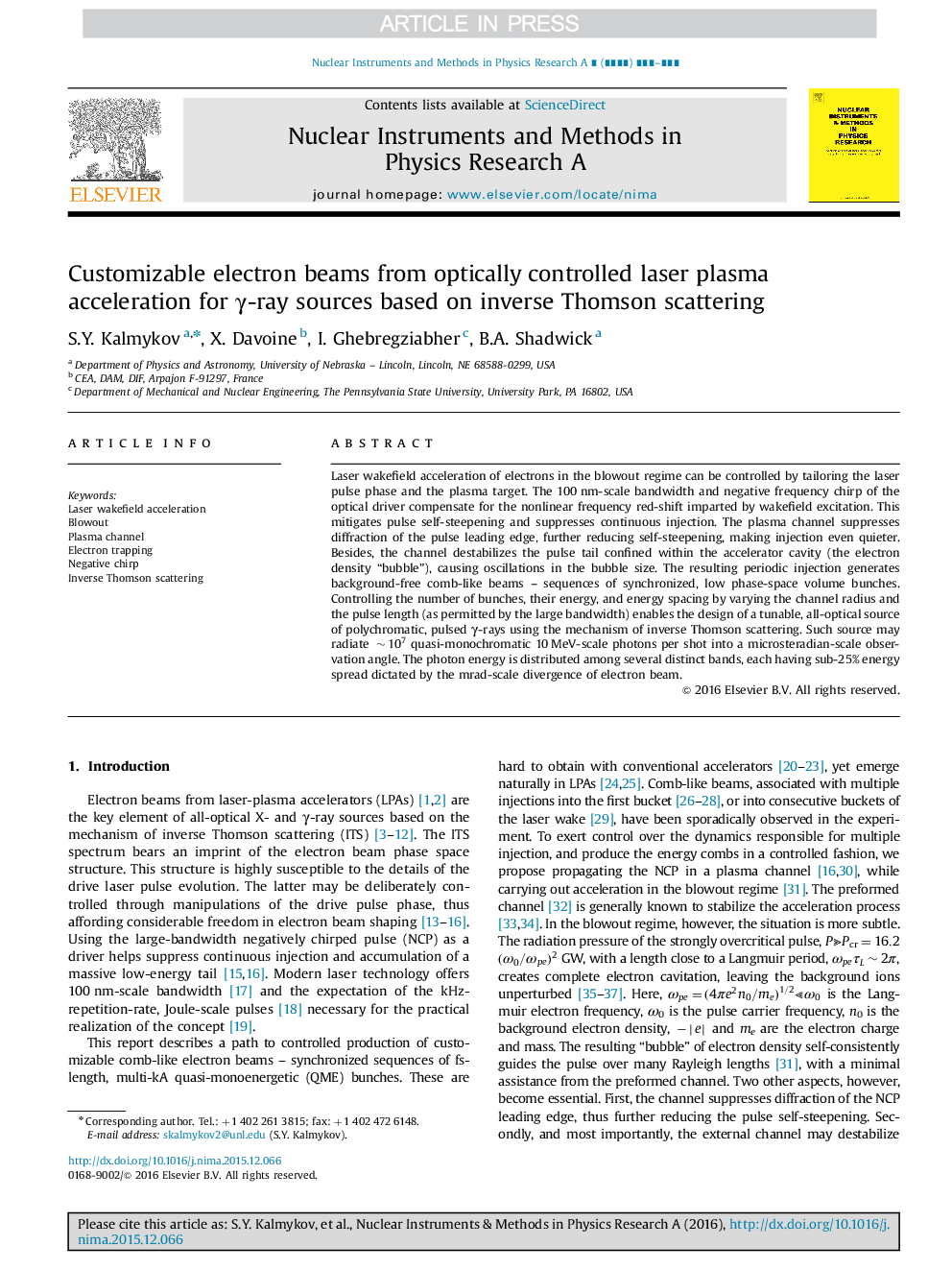| Article ID | Journal | Published Year | Pages | File Type |
|---|---|---|---|---|
| 8169079 | Nuclear Instruments and Methods in Physics Research Section A: Accelerators, Spectrometers, Detectors and Associated Equipment | 2016 | 6 Pages |
Abstract
Laser wakefield acceleration of electrons in the blowout regime can be controlled by tailoring the laser pulse phase and the plasma target. The 100 nm-scale bandwidth and negative frequency chirp of the optical driver compensate for the nonlinear frequency red-shift imparted by wakefield excitation. This mitigates pulse self-steepening and suppresses continuous injection. The plasma channel suppresses diffraction of the pulse leading edge, further reducing self-steepening, making injection even quieter. Besides, the channel destabilizes the pulse tail confined within the accelerator cavity (the electron density “bubble”), causing oscillations in the bubble size. The resulting periodic injection generates background-free comb-like beams - sequences of synchronized, low phase-space volume bunches. Controlling the number of bunches, their energy, and energy spacing by varying the channel radius and the pulse length (as permitted by the large bandwidth) enables the design of a tunable, all-optical source of polychromatic, pulsed γ-rays using the mechanism of inverse Thomson scattering. Such source may radiate ~107 quasi-monochromatic 10 MeV-scale photons per shot into a microsteradian-scale observation angle. The photon energy is distributed among several distinct bands, each having sub-25% energy spread dictated by the mrad-scale divergence of electron beam.
Related Topics
Physical Sciences and Engineering
Physics and Astronomy
Instrumentation
Authors
S.Y. Kalmykov, X. Davoine, I. Ghebregziabher, B.A. Shadwick,
